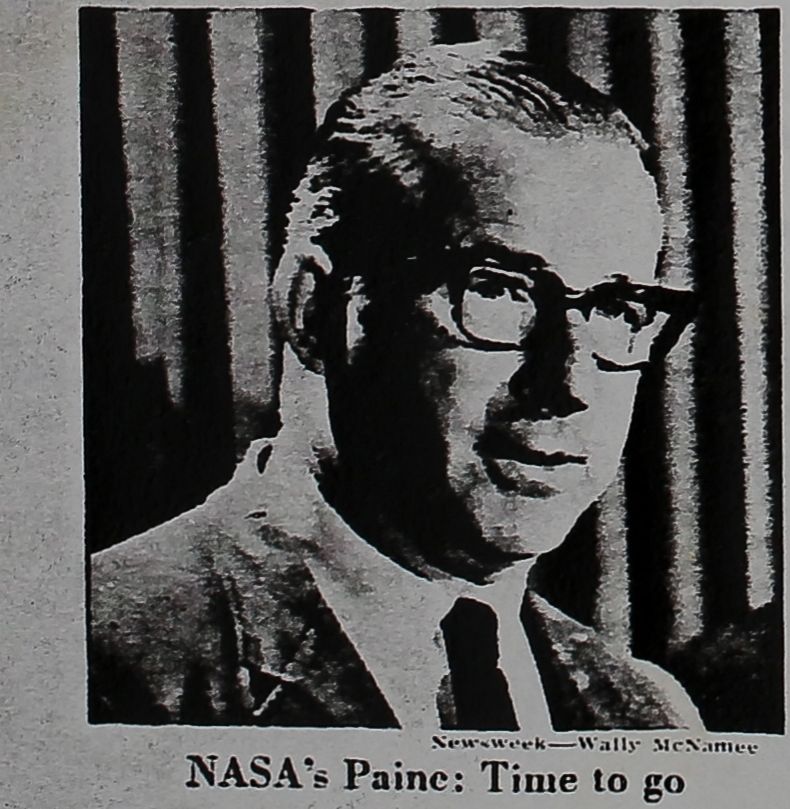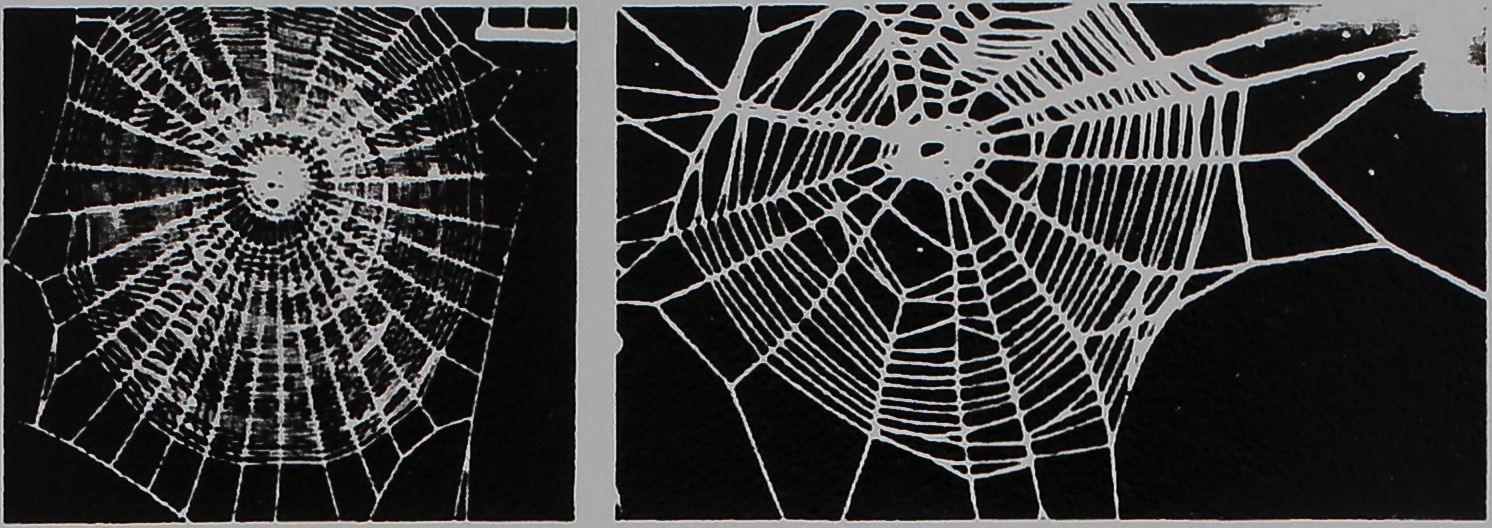Images Collection
View this article in Search Friendly Plain Text
NOTE: This plain text article interpretation has been digitally created by OCR software to estimate the article text, to help both users and search engines find relevant article content. To read the actual article text, view or download the PDF above.
Exit the Spaceman
Decisiveness and good judgment are essential hallmarks of leadership, and in the nearly two years that he has .directed -the U.S. space program. Dr. Thomas O. Paine has .displayed both under .conditions of the most excruciating tension and fatefulness, If was he who decided to send Frank Borman’s Apollo § space-craft on its pioneering journey- around the moon, despite a lag in production of the lunar module which meant that the ship would have to fly without any backup system in case its rockets failed. It was lie who presided over the epochal adventure of Apollo 11, culminating- in man s first step on a world beyond his planet; and it was he who was ultimately responsible for bringing the desperately stricken Apollo 13 mission safely back to earth in April. Last week, Paine made his final tough decision for the National Aeronautics and Space Administration: he resigned.
■ “Tire ideal time to quit never icomes,” he declared. “But all things considered, this is at least the appropriate time.” As sorry as his colleagues were to see him depart, it was difficult to deny that Tom Paine’s judgment was, as ever, sound. The next moon flight lies a half year off (delayed until next January to permit spacecraft modificatipn designed to pre-dude another accident such as befell Apollo 13), this year’s NASA budget has finally been settled, and—most impois-tant—the U.S. space program as a whole seems to be passing into a new and .more deliberate phase after the spectacular triumphs ‘Of .the crash effort to reach fire moon.
‘ Budget: Paine’s activist personality is ill-suited to a decelerating program, and in die past he has expressed his disappointment at the fading budgetary fortunes of the space agency (NASA expects to receive about $3.3 billion this fiscal year—about half of what it got in 3966, its peak year), inevitably, some observers speculated that his resigna-

August 10.1970

From straight to stoned: Spider webs before and after a dose of dope
tion may have stemmed from a disagreement with fhe Nixon Administration on proper funding for space. Not so, Paine insisted stoutly last week. “I would like to see [the budget] ^slightly more,” he admitted, “but I can’t say it’s not appropriate in yi’ew of Vietnam, our domestic problems: and inflation.”
As a matter of fact, Päjne himself has fimHepi NASA’s more modest future, which points toward djfe\ development of space stations equipped with reusable: shuttle vehicles that would zip back and forth to earth. His own immediate future will carry him back to tire General Electric Co., where he worked for nineteen years before joining NASA early in 1968. Paine will take over a still unspecified post at CE in New York (doubtless at a salary far higher than the $42,500 he earned as head of NASA) and’ will concentrate on “important national j^pbichi#’ outside the aerospace field, [a»aspib: avoid any conflict-of-interest embarrassmen ts.
No sooner had Paine given his notice than the space agency began churning with speculation over who might be picked to succeed him. A number of big names bobbed up, among them Wernher Von Braun, 58, the German-bom rocket-master who was transferred- this year from the Huntsville research center in Alabama to a high-level job at NASA headquarters, and even former astronaut Borman, 42, now an Eastern Airlines executive. But it seemed more likely that Richard Nixon would either opt for one of Paine’s top NASA deputies, such as Rocco Petrone or George Low, or turn to the outside for, as one knowledgeable Washingtonian put it, “a technically oriented Republican.”
Freaked-Out Spiders
Guinea pigs, rats, mice and monkeys are the commonest animals used by scientists in research. But when Dr. Peter N. Witt, director of research for North Garolina’s Department of Mental Health, set out to learn more about the effects of drugs on human behavior, he settled on a most unlikely lab animal: Arancus diade-matus. a common species of the orb spider, whose intricately symmetrical webs glisten with morning dew in fields and IgSdCTS^’..
In fact, it was the symmetry of the orb spider’s wheel-like web that led Witt to choose tire creature for his.experiments: any disturbance in the spider’s nervous or muscular systems, he reasoned, would Ire revealed in the wehs it spun. He raised swarms of the gray and brown creatures and patiently amassed thousands upon thousands of pictures of .normal webs. Then he set his spiders tripping on a variety’ of drugs, sipped from a syringe in a dilute solution. The webs began to freak out accordingly, and Witt fed the results into an 1BM/360 computer, which compared them with a composite “normal” web structure and then printed out a numerical code from which Witt was able to infer certain differences in the drugs’ effects.
Irregular: Amphetamines are stimulants; they cause humans to become hyperactive, hallucinatory and disoriented. “A similar thing happens to spiders,” Witt said. “On amphetamines, they make all the proper assessments in building the web—but then fail to make the correct actions. They see where the last strand was. placed and they know where the next one should go, but then they weave it in the wrong place.”
Amphetamine webs tend to have highly irregular structures, while those woven under the influence of tranquilizers are usually regular in pattern but considerably smaller than normal. Tire whackiest webs were those spun by spiders stoned on high doses of barbiturates, or “downers.” These webs tended to be both smaller and more widely erratic than the other two types.
Witt hopes through his spider experiments to add to the still diminutive store of knowledge on the effects of hallucinogenic drugs on man. Already, for example, he believes he has detected a major difference in two substances long thought to be similar, mescaline and psilocybin. Mescaline,, derived from a cactus, causes spiders to build small, irregular webs; this suggests to Witt that it is primarily the animals’ muscular coordination that is impaired. Psilocybin, extracted from a mushroom, leads them to weave webs that are normal in design but extremely small in size: the animals seem to lose interest in the process and quit early. Wilt concludes that psilocybin affects not so much the muscles as the brain.
67


